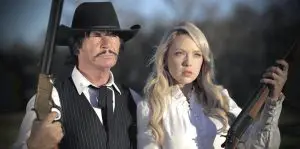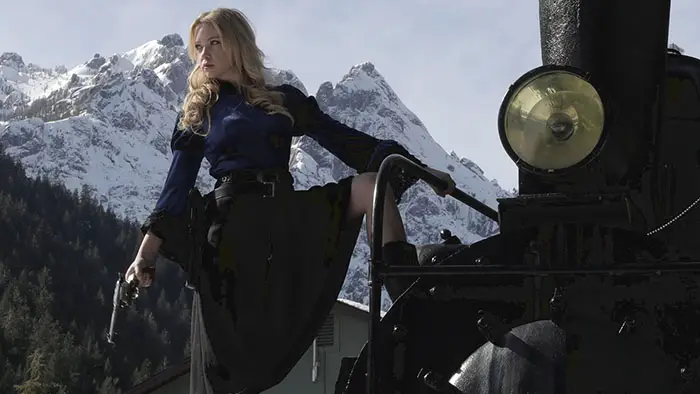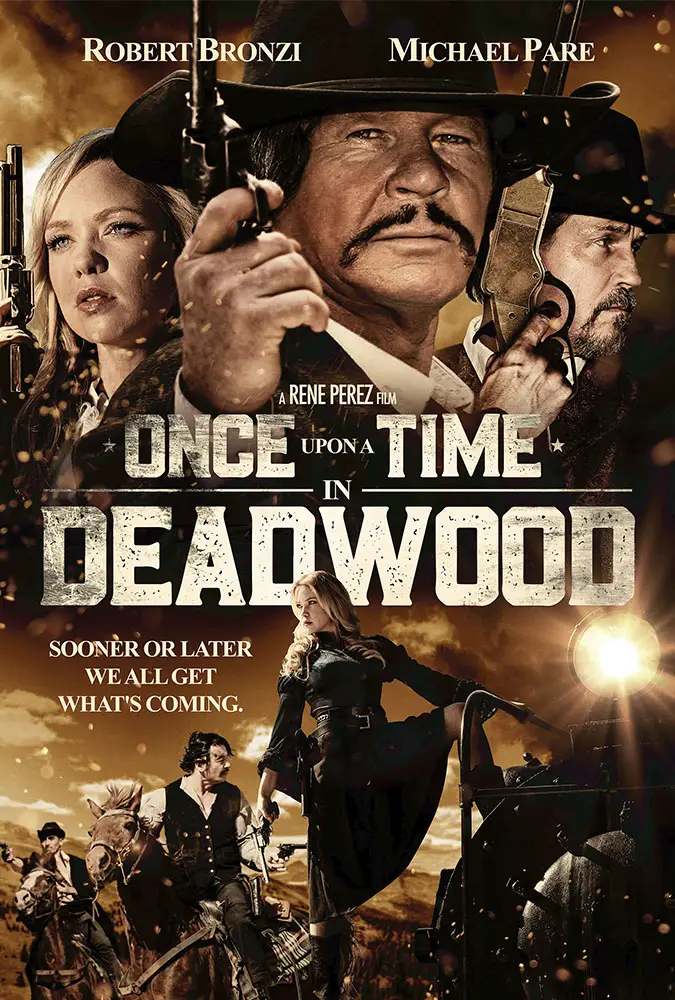
The overuse of slow-motion by Perez can only be understood as overindulgence by an amateur-level director intent to show off, citing no dramatic purpose for its use. Furthermore, in addition to a problematic concept of focus, Perez doesn’t seem to have a working comprehension of simple blocking. In one instance, for example, The Colonel and Ursula have devised a plan to outwit some potential attackers. The establishing shot shows Ursula in a long shot, undressing by the lake (in the one instance of nudity in a movie that would have benefitted from much more). The viewer is to comprehend that The Colonel is hiding behind some trees, surveying the scene from afar. As Ursula undresses, she whispers, ostensibly to The Colonel, that she doesn’t think the plan is working, and The Colonel responds, assuring her that it is. How is this at all possible considering what we have been shown to be the spatial relationship between the characters? The outlaws would have undoubtedly heard Ursula and The Colonel’s exchange, and their cover would have certainly been blown.

“…filming Brauns in slow motion on horseback as she glides over the plains…”
The sloppiness doesn’t end there. There is a moment later in the film when a gangster punches Ursula in the face. The shot and the soundtrack cue the viewer that the outlaw has, at the very least, broken Ursula’s nose. Yet, the only consequence of this violence that is seen on Ursula’s face is some blood on her lip and an inexplicable cut on her forehead!
This ludicrous film is shot (by Perez) with much too much of a polished palette to be convincing as a gritty western. The acting by a game, but inept, cast is barely adequate.
Once Upon a Time in Deadwood is too tame to be soft-core Skinemax; too shiny to be worthy of a true western genre entry. McCabe and Mrs. Miller this is not.

"…too tame to be soft-core Skinemax..."
